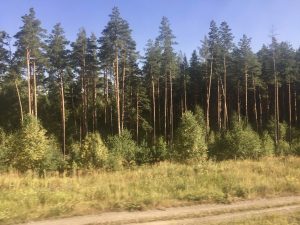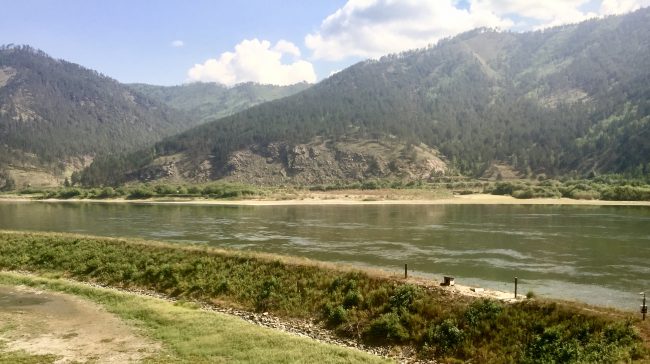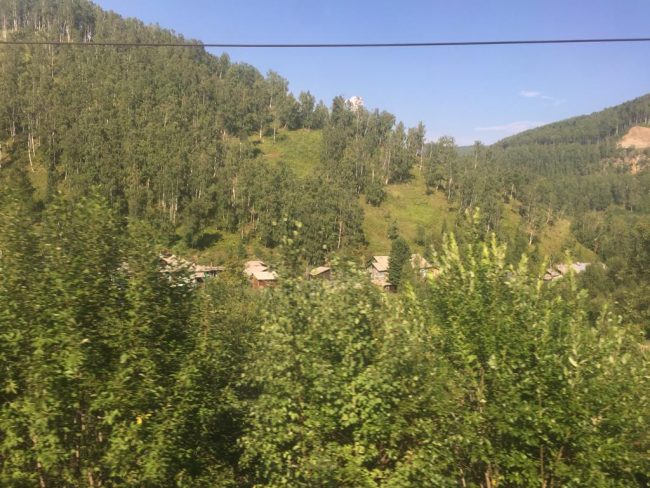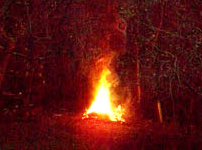Forest and grassland fires

In early Spring this year, both Norway and Sweden reported wild fires in their forests, due in part to a run of dry weather. More recently, fires have been reported in many parts of the world - particularly in the Amazonian Forest, parts of Africa, Siberia, Canada and even within the Arctic Circle.
A few years back, the Russian authorities initiated a policy of allowing remote forest fires to burn - unless the trees / areas were of economic importance. However, the fires this summer affected thousands of square miles of boreal forest and strong winds spread the smoke and ash across the country; it affected cities such as Novosibirsk and Krasnoyarsk (each home to a million people).
Eventually the Russian President sent in military planes and helicopters to douse the flames; and Prime Minister Medvedev ordered the government to examine the burn regulations. Russia has the largest area of forest in the world; it covers some 40+ % of the country; much of it is remote and difficult to reach, which creates particular challenges when trying to contain / control the fires.

Woodland and forest as seen from the Trans Siberian railway
Apart from releasing megatons of carbon dioxide, it is thought that these intense forest fires also release particles known as “black carbon” . These particles are transported in the wind and eventually settle. Some end up on Arctic ice sheets, where they alter the albedo - ‘soaking up’ sunlight and accelerating thawing. As many of this year’s fires were above the Arctic Circle, it is probable that many of the ‘black carbon’ particles will indeed land on ice sheets / snow.

more woodland and forest, as seen from the Trans Siberian railway
The most recent fires in the Amazon have provoked an inter-national outcry as the forests here are often described as ‘the lungs of the world’. Whilst fires in this region are to be expected at this time of the year - as it is the ‘dry season’, many of the fires are believed to have been started deliberately (clearing for agriculture or mining). An interesting graphic of the fires can be found on the BBC site..
Whilst there is a case for certain communities / ecosystems to periodically experience fire, allowing for regrowth; this is not the situation in the Amazon. The tropical forests of the Amazon have no adaptation to fire and suffer immense damage in consequence. There is concern that these fires will make the Paris climate target more difficult to achieve.
The fires that are seen in Africa are different as they (generally) affect grassland / savannah, not forests and woodlands. The animals and plants of these areas are ‘adapted’ to survive periodic fires. Whether one can say that such fires are natural  is a matter for some debate as our ancestors and closest relatives (hominins) have been lighting or using fires for probably the best part of a million years in these areas.
is a matter for some debate as our ancestors and closest relatives (hominins) have been lighting or using fires for probably the best part of a million years in these areas.
After a fire (and then rain), lush green grass would appear which would attract animals that could be hunted or it would allow ‘domesticated animals’ to graze. Fire might also be started to clear / manage the growth of thorny scrub or reduce the numbers of parasites - such as ticks (which acts as vectors of animal and human disease). Dr Colin Beale’s work (University of York) suggests that fires can contribute to biodiversity in Savannah / grasslands. This is in marked contrast to the fires of the Amazon, which come at a high cost to plant and animal biodiversity, to the indigenous peoples of the area and global emissions of carbon dioxide.
Comments are closed for this post.
